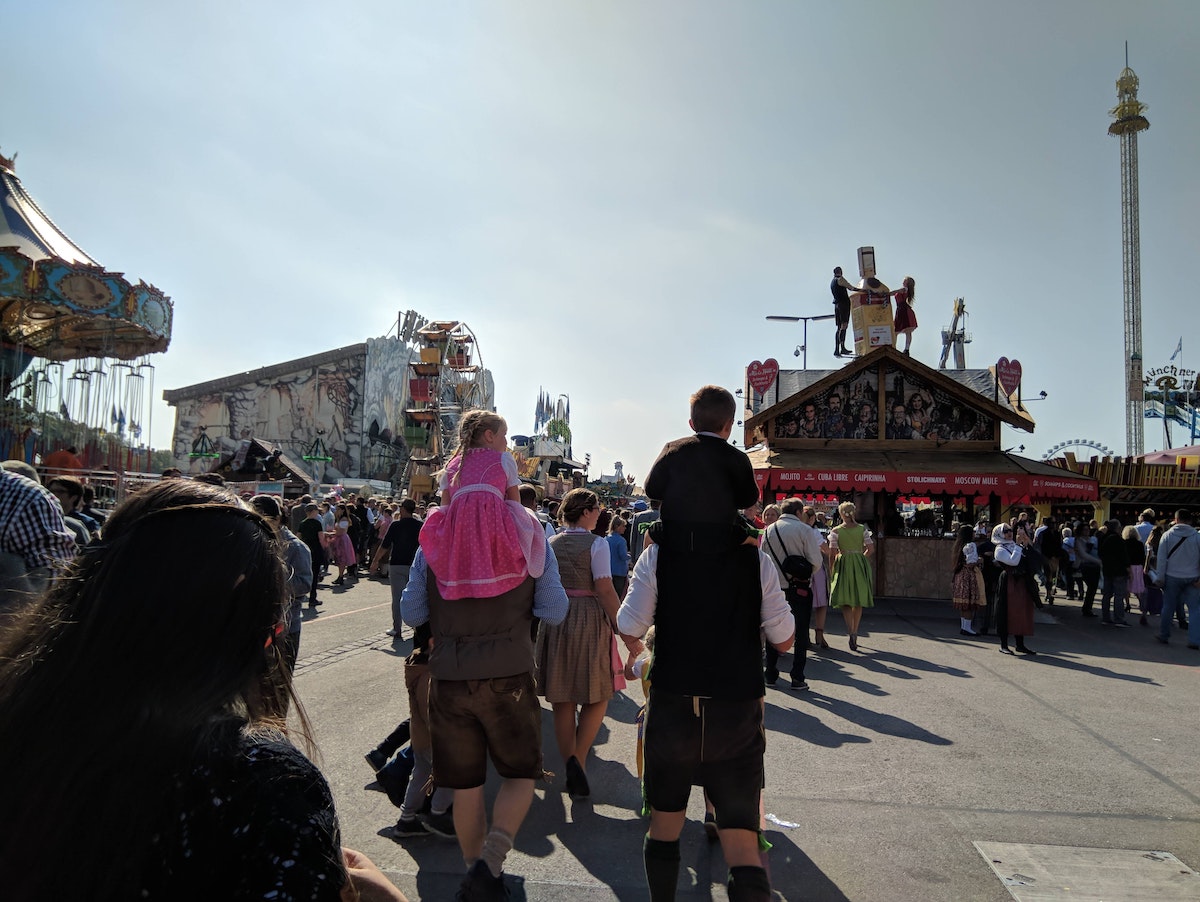Table of Contents
Oktoberfest is a traditional German festival that spans the last week of September and the first week of October. The festival originated in the 17th century and has since spread beyond the borders of Bavaria to create a global phenomenon. There are plenty of craft brews, specialty foods, and accompanying German music that make this festival one of the best times to get together with friends and grab a drink. Reach out to your local beer garden or rooftop bar and grill to find out what they have in store for Oktoberfest this year.
Today, Oktoberfest has become much more than a popular time to drink beer. In many ways, it is a celebration of German folk culture. Dressing up for Oktoberfest in ‘lederhosen’ is a popular way to celebrate, as is listening to traditional Bavarian music and dancing. Many towns or cities that host a local version of Oktoberfest include markets full of handmade German goods and snacks. Even if you are not interested in drinking, there are plenty of ways to enjoy Oktoberfest.
But where did this celebration come from, and how has it become so popular on a global scale? Let’s take a look at the origins of the festival and some of its most important historical moments to find out.
1810: A Royal Wedding
The Oktoberfest tradition originated from the celebrations surrounding the marriage of Princess Therese von Sachsen-Hildburghausen to Ludwig I, who later became the king of Bavaria. The celebrations were held in the Bavarian city of Munich, situated in present-day Germany’s southern region. The marriage celebrations lasted for five days and included horse races and, eventually, an agricultural fair in which many people from outlying towns would come into the city for the occasion. This original celebration was by no means a beer drinkers festival- this part of the tradition developed slowly over time.
1819: The Grand Market
The festivities of the royal wedding in 1810 were a great success and helped to inspire the creation of an annual tradition surrounding these seasonal celebrations. The Bavarian agricultural association sought to make these celebrations a reality. The new event planners that helped make Oktoberfest an annual occurrence saw an opportunity to create an event that included a market where their goods and services were easy to promote. The fall market, which centered around the later part of harvest time, attracted large-scale crowds, which helped make the celebration a profitable venture. At this time, the food and drink options we have come to associate with Oktoberfest were on offer to anyone visiting the city.
1910: An Anniversary of Note
The 100th anniversary of Oktoberfest was a celebration of large proportions. Beer tents and tables were able to accommodate more than 10,000 guests, and celebrations extended an extra week. By this time, many of the food and drink festivities had become what we know and celebrate today. Carousels and other rides opened, and the introduction of electricity kept visitors drinking, eating, and dancing in the beer tents throughout the night.
1914-1918 & 1939-1945: World War
During the first and second World Wars, the festival organizers kept the Oktoberfest festival temporarily on hold due to the conflict. For a few years after the first World War, the celebration continued in a much smaller form than prior to the war. In the mid-1920s, the festival was again canceled due to the hyperinflation of the German Rentenmark (Weimar currency), which had quickly lost all value due to the war reparations the German government owed to Britain, and by extension through the Dawes plan, America. Despite these cancellations for several years at a time, the tradition moved forward to the newly divided Germany.
1950: The First Keg Ceremony
For the first time since the event’s beginning, the mayor of Munich attended the event and opened the first keg. This opening of the first keg of beer by the city’s mayor has become an important ceremony for beginning the festivities each year and is still an essential part of the event today. In fact, the famous phrase o’zapft is, which translates from Bavarian dialect as “it has been tapped”, originates from this moment. Today, festival attendees use the phrase “o’zapft is” to celebrate the beginning of the celebrations (and drinking). Many aspects of the festivities that had disappeared during the wars and the Weimar Republic were reinstated so that the number of visitors continued to grow each year.
Present Day Celebrations
Today Oktoberfest in Munich is an event that attracts more than six million visitors each year. The majority of the visitors are from the Munich area or elsewhere in Germany. However, for many individuals, Oktoberfest is an excellent event from planning international travel around. Each of the major German breweries is present and each have a wide selection of brews on offer for everyone who comes to visit.
The carnival-style rides at Oktoberfest are a mainstay and the traditional clothing is still an excellent way to celebrate one’s heritage. In 2017, the Oktoberfest crowds drank an estimated 7.7 million liters of beer, or nearly 2 million gallons of beer. Unfortunately, in the past two years, Oktoberfest in Munich was on hold as a result of the coronavirus pandemic. However, in most years, the festival is major tourist attraction that drives significant revenue through the city of Munich.
For many people with German heritage, celebrating Oktoberfest each year is a must, no matter where they are in the world. Even if you are not German, you can still celebrate Oktoberfest at your local beer garden or rooftop bar and grill, or any bar that carries an Oktoberfest brew. In the United States, Oktoberfest is an incredible opportunity to get together with friends and family while enjoying traditional culture and a drink (or three).
Featured Photo by Chandramohan Sudar


